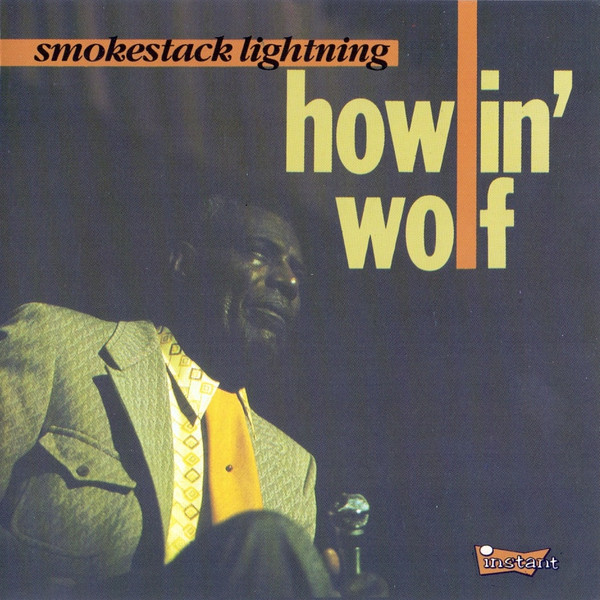 | Smokestack LightningHowlin’ Wolf |
Writer(s): Chester Burnett (see lyrics here) First Charted: March 17, 1956 Peak: 8 RB, 42 UK, 4 DF (Click for codes to charts.) Sales (in millions): -- Airplay/Streaming (in millions): -- radio, 36.90 video, 64.93 streaming |
Awards:Click on award for more details. |
About the Song:Howlin’ Wolf was a menancing presence – 6’ 3”, 300 pounds, and size 14 feet. He had “a ferocious vocal power” SS to match, making him “one of the reigning gods of postwar Chicago blues.” SS He was born Chester Arthur Burnett on June 10, 1910 in West Point, Mississippi. He learned to play guitar from legendary blues man Charley Patton. His maternal grandmother nicknamed him “Wolf” when he was a child, a moniker which his biographers said suited him perfectly. He was “a musician who roamed by himself: a lone wolf. His unusual blue-gray eyes, so like a wolf’s, seemed to glare right through people rather than at them.” SS He was also “a proverbial wolf with women” and “his lupine howl gave him the aura of some unsettled creature of the night.” SS Thanks to numerous childhood bouts with tonsilitis which damaged his vocal cords, his “voice sounded like he subsisted on a diet of broken glass…washed down…with kerosene.” SS Howlin’ Wolf was already 41 years when Sam Phillips heard him on a Memphis radio show and produced his double-sided debut single “How Many More Years” and “Moanin’ at Midnight” in 1951. Phillips leased the tracks to Chess Records and soon Howlin’ Wolf was working out of Chicago. That same year he recorded “Crying at Daybreak,” an early version of “Smokestack Lightning.” SS It was a song he’d been performing since the early 1930s. It was partially inspired by Charley Patton’s “Moon Going Down,” which used the phrase “smoke light lightning” in reference to a river boat. SS The song may owes a debt to “Stop and Listen Blues,” a 1930 song by the Mississippi Sheiks that included the line “crying, smokestack black baby; the bells it shine like gold.” SS Howlin’ Wolf employed a similar line – “The smokestack is black and the bell, it shines like gold” – in “Smokestack Lightning.” In 1954, Howlin’ Wolf re-recorded “Crying at Daybreak” as “Smokestack Lightning.” “While the band stayed on the same chord throughout the song, the tension never relented on this arresting performance from Wolf, Willie Johnson and company.” BH Wolf’s recording featured the famed Willie Dixon Chess session player on bass. Still, it would be two more years before it was released as a single. Then “the Wolf’s quintessential howling cry rode a hypnotic pounding beat all the way to the Top Ten of Billboard’s rhythm & blues charts.” BH Lightning struck twice as eight years later, Howlin’ Wolf found himself on the UK charts at#42 with the song. Resources:
Related Links:First posted 9/10/2023. |








No comments:
Post a Comment